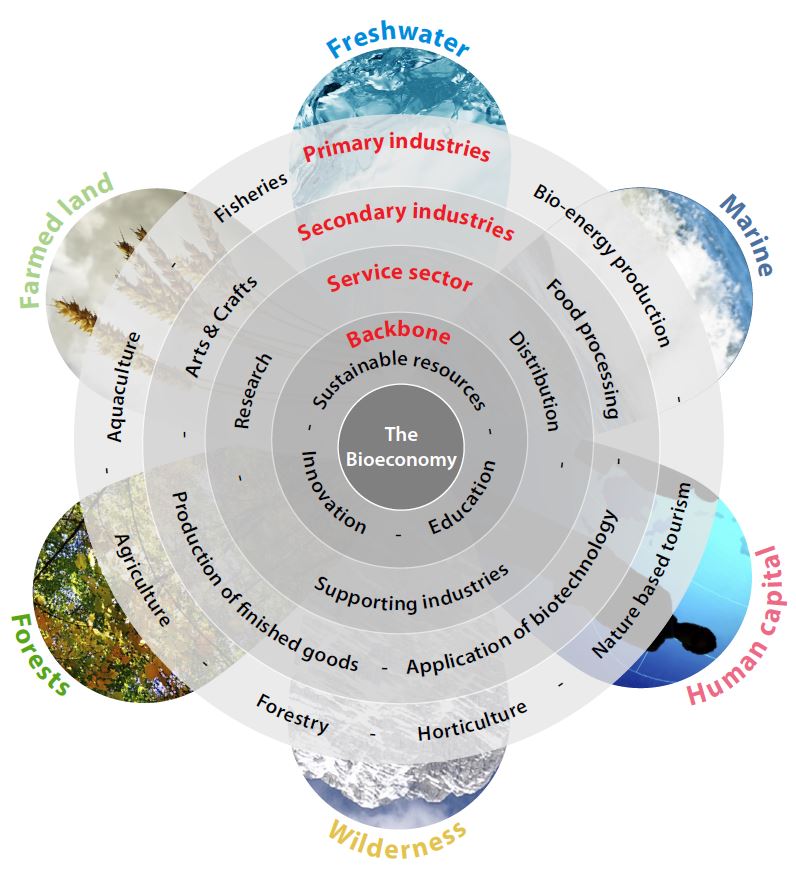South Iceland is a geographically large region (30,966 km2) with a relatively small population (26,000 inhabitants in 2012) and considerable diversity in the characteristics of its populated areas. Agriculture, fisheries and tourism are its main industries. The development of South Iceland’s bioeconomy is mostly focused on increasing efficiency and generating higher-value uses from existing resources.
Process and product innovations at the core
South Iceland’s bioeconomy is largely driven by Matís Ltd, a government-owned, independent research company that specialises in ‘[v]alue creation within the bioeconomy and the development of policy and infrastructure in areas in need of understanding and training in the food production’. For the most part, the focus is on small-scale innovations in both products and process. Examples of existing projects include developing new types of lobster packaging to enable more efficient transport, experimenting with fish waste as a fertiliser, and developing different types of small-scale food products to be sold to tourists and visitors.
The value of human capital in sparsely populated areas
Human capital can be a double-edged sword in sparsely populated areas. The relatively small number of players makes it possible for one highly motivated or visionary individual to have a huge impact. However, the absence of such a person can be a real problem. The lobster cluster in South Iceland is an illustrative example of this. Joint R&D activities within the cluster were driven by a highly active employee at the Regional Association of Local Governments (SASS). Following this employee’s resignation, the cluster’s activity declined dramatically. Attracting appropriately qualified and experienced people to account for outmigration can be a challenge. Communities in sparsely populated regions are small and, as is the case in South Iceland, education levels are often below the national average. Although outside experts can fill this gap to some extent by providing technical expertise and short-term assistance, these actors generally lack the time and local knowledge necessary to provide holistic, long-term support.
The bioeconomy as a national policy priority
The development of the bioeconomy has been a national policy priority in Iceland since the early 2000s. Bioeconomy activities are prioritised for R&D funding and, since 2002, there has been a particular funding instrument dedicated to increasing the value of marine products. As noted, Matís Ltd, which was founded in 2007 through the merger of three public research companies, is a key player in supporting the development of the bioeconomy and in promoting co-operation between actors. Although its head office is located in Reykjavík, the company also has a regional presence, allowing it to work closely with industry professionals on the ground to develop new ideas and innovations. Other key enabling factors include the easy access to natural resources, the availability of funding, and the existence of obvious synergies between sectors. Remaining challenges include geographic barriers to attracting appropriately skilled personnel and a lack of funding in the intermediate stages of development.
Regional dimension
The bioeconomy is seen as a strong tool for developing Iceland’s regions as a whole and companies within the bioeconomy make up a significant portion of the total workforce in regional areas. Of particular interest in South Iceland is the potential for synergies between the bioeconomy and tourism sectors. Tourists are an ideal market for food products perceived to be uniquely Icelandic. Many of the existing innovations in food products are already sold to tourists and there are many opportunities to strengthen this link.
Learn more…
The Icelandic definition of the bioeconomy
